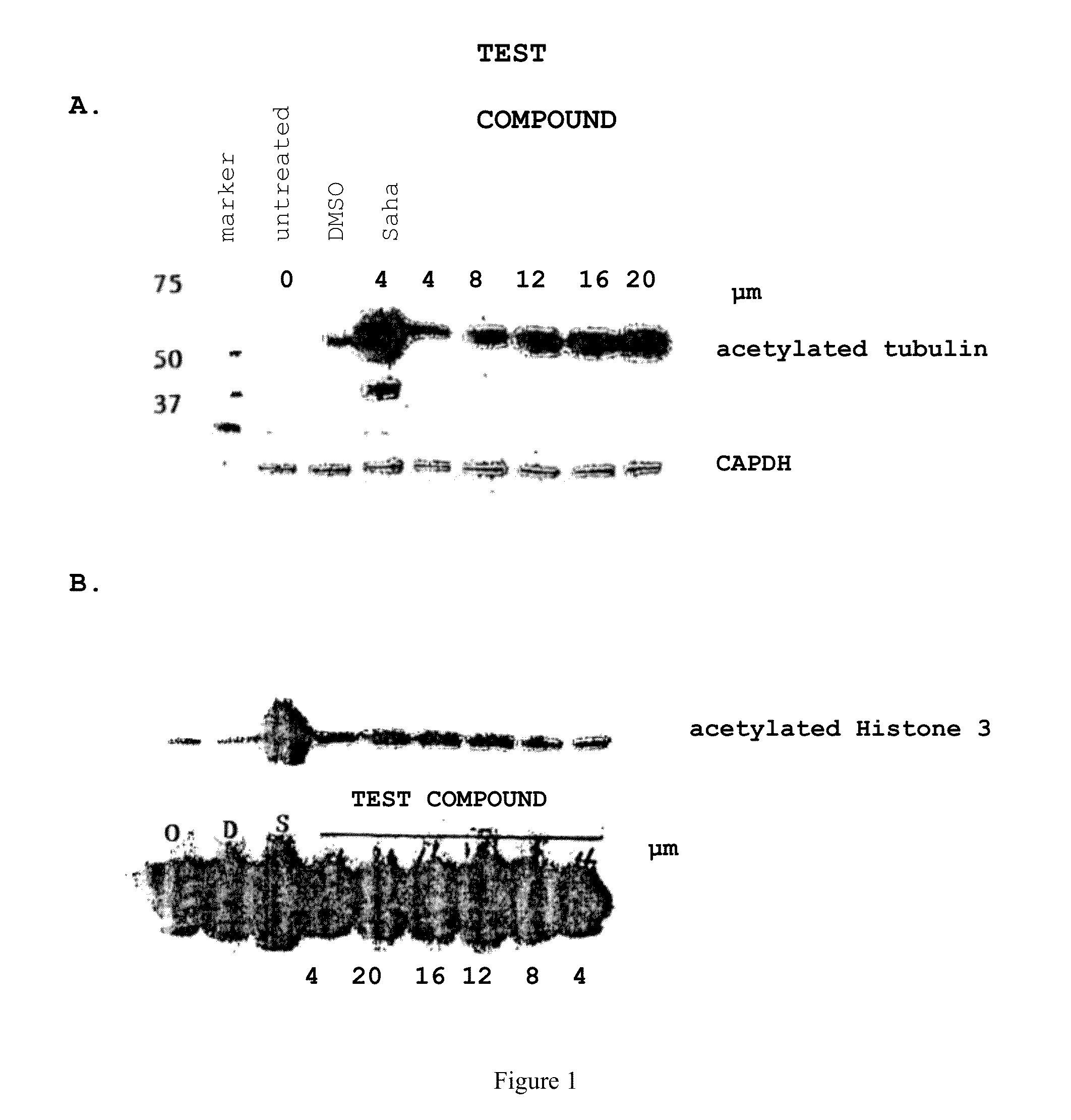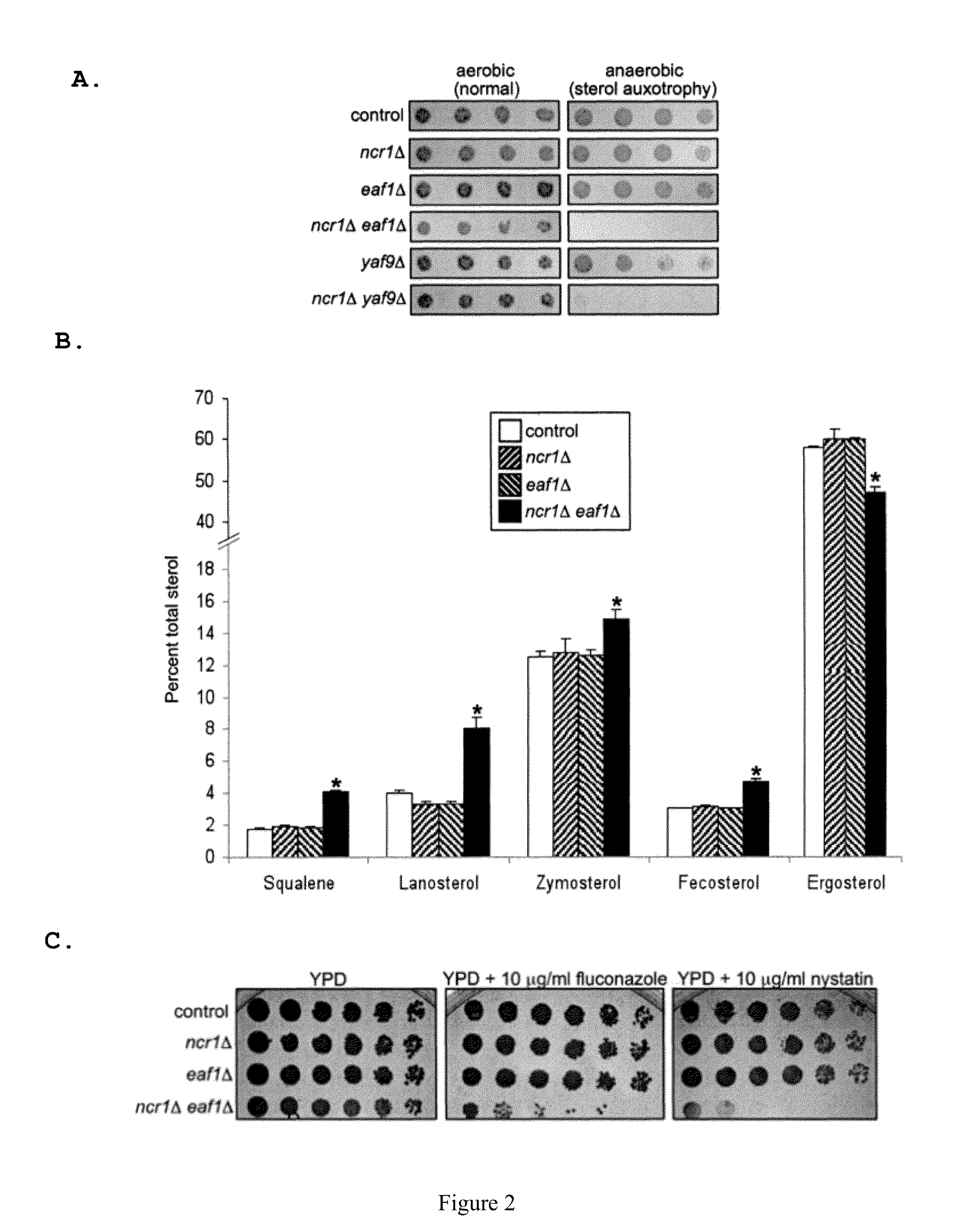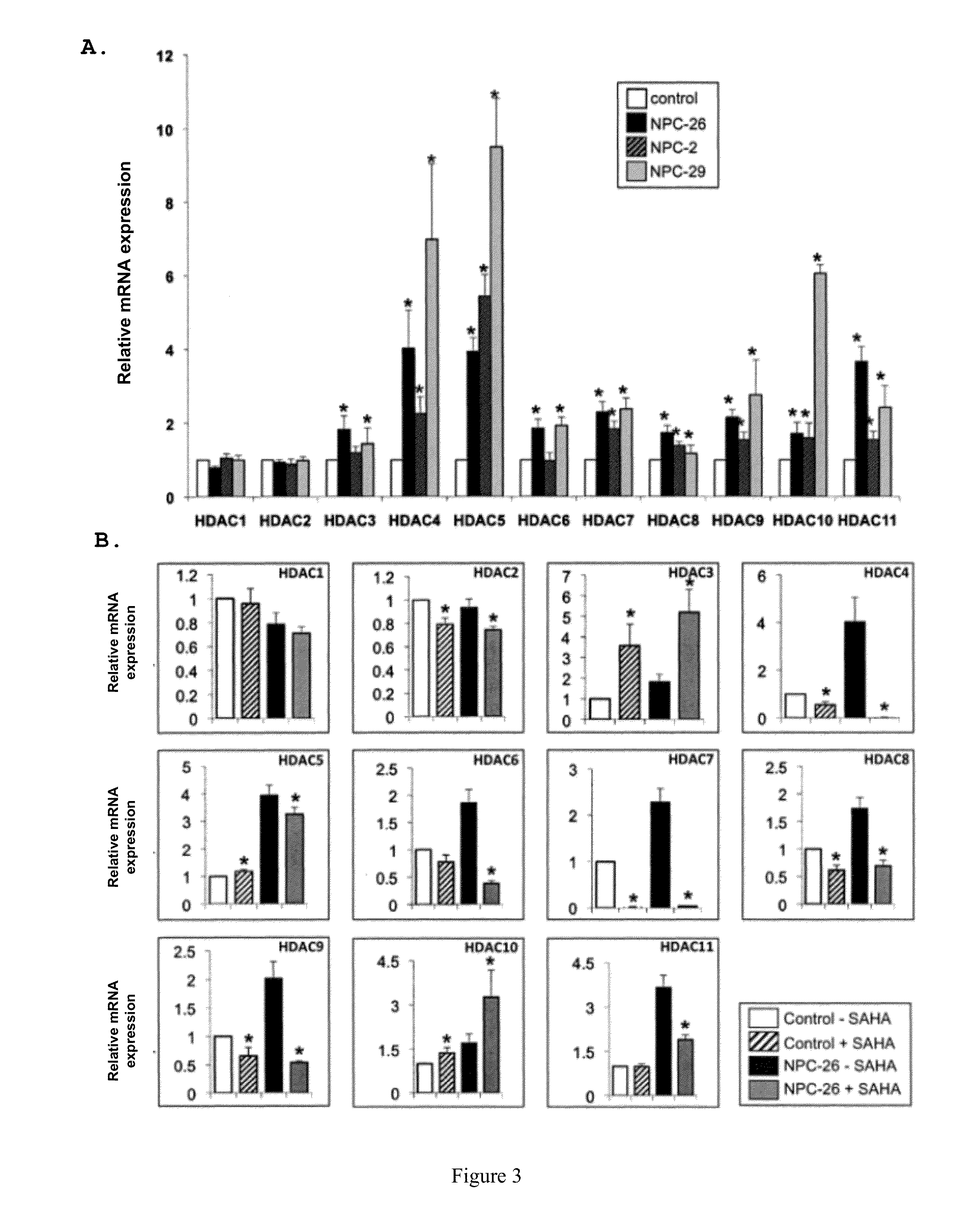Selective HDAC inhibitors
- Summary
- Abstract
- Description
- Claims
- Application Information
AI Technical Summary
Benefits of technology
Problems solved by technology
Method used
Image
Examples
example 1
Synthesis of Selective HDAC Inhibitors
[0401]
Di-tert-butyl 2-(4-aminophenyl)malonate (2)
[0402]To an ice-cooled solution of di-tert-butyl malonate (24.0 mL, 0.108 mol) in anhydrous DMF (60 mL) was added potassium tert-butoxide (12.1 g, 0.108 mol). The suspension was allowed to warm to room temperature and stirred for 20 min. 1-Bromo-4-nitrobenzene (10.0 g, 0.0495 mol) was added to the mixture and kept at room temperature for 10 min. The resulting yellowish suspension was heated at 120° C. for 1 h. The deep red solution was then quenched with 3N HCl (aq.) and adjusted to pH=5-6. After removing the volatiless in vacuo, EtOAc (200 mL) was added and the solution washed with H2O (100 mL), brine (50 mL), dried over Na2SO4 and filtered. The filtrate was concentrated in vacuo and the residue was dissolved in EtOH (100 mL) and treated with ammonium formate (15.8 g, mol) and Pd / C (10 wt %, 2 g). The suspension was refluxed for 30 min and quenched with celite. After filtration, the filtrate was ...
example 2
IC50 Values for the Inhibition of HDAC6 and HDAC1
[0510]Various compounds were tested in in vitro enzyme assays for their activity in inhibiting HDAC6 and HDAC1. The results are set forth below. The assays used was a fluorogenic HDAC assay kit (BPS Bioscience, San Diego, Calif.). On a micotiter the HDAC fluorometric substrate containing an aceylated side chain is incubated with a sample containing HDAC activity (purified / recombinant HDAC1 or HDAC6 enzyme). The deacetylation sensitizes the substrate so subsequent treatment with a lysine developer produces a fluorophore that can then be measured using a fluorescence reader. The assay is performed in the absence and presence of the potential inhibitor compound.
Cmpnd. #IC50 onIC50 onIC50andHDAC6HDAC10 ratioSyntheticCompound(nM)(nM)(1 / 6)Scheme906126.8Tubacin5.838.46.6Kozikowski compound34.4106.23.1(77)65.7676.310.3(78)4.446.710.6(79)3128.642.9 (9) Scheme 22.25242.3107(15) Scheme 2 and (6) Scheme 157144525(28) Scheme 322113051(31) Scheme ...
example 3
LNCaP Cells were Cultured with the Following Compound
[0511]
[0512]Staining of the cultured LNCaP cells showed induced accumulation of acetylated alpha-tubulin (See FIG. 1A), but not acetylated histone, H3 (See FIG. 1B). These results are consistent with this compound selectively inhibiting HDAC6 in this cell-based assay.
Materials and Methods
Cell Based Assay—Cell Growth & Viability
[0513]Adherent Cells: LNCaP (human prostate cancer cells), HFS (human foreskin fibroblasts)[0514]Suspension Cells: MELC (murine erythroleukemia cells)
Adherent Cells:
[0515]1. Seed 5×104 cells / well (24 well tissue culture plate) and allow cells to adhere overnight (18 h)
2. Treat cells with drug(s) as indicated, Treatment time=Time 0
3. Harvest cells using trypsin at 0, 24, 48, 72 h after treatment and count manually with hemocytometer using trypan blue dye exclusion.
Suspension Cells:
[0516]1. For using log phase growing cells, suspension cells are split 4×105 cells / ml day before experiment.
2. Treat cells (1×105 ...
PUM
| Property | Measurement | Unit |
|---|---|---|
| Composition | aaaaa | aaaaa |
| Structure | aaaaa | aaaaa |
Abstract
Description
Claims
Application Information
 Login to View More
Login to View More - R&D
- Intellectual Property
- Life Sciences
- Materials
- Tech Scout
- Unparalleled Data Quality
- Higher Quality Content
- 60% Fewer Hallucinations
Browse by: Latest US Patents, China's latest patents, Technical Efficacy Thesaurus, Application Domain, Technology Topic, Popular Technical Reports.
© 2025 PatSnap. All rights reserved.Legal|Privacy policy|Modern Slavery Act Transparency Statement|Sitemap|About US| Contact US: help@patsnap.com



